Are you looking to craft the perfect letter inviting an embassy official for a visit? It's essential to strike the right tone while being polite and professional, ensuring your invitation conveys the purpose and importance of the visit. With clarity and warmth, you'll want to provide key details that highlight the significance of their presence. So, let's explore how to create an engaging and effective invitation that leaves a lasting impression!
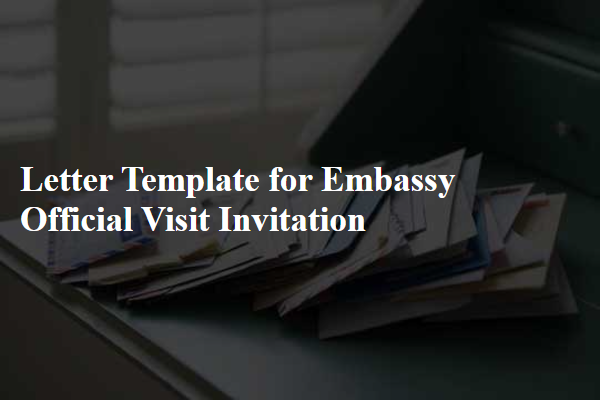
Purpose of Visit
An official visit invitation for an embassy typically outlines the significance of the visit. Key points to include are the agenda, specific discussions related to bilateral relations, and the intended outcomes. Highlighting the importance of diplomatic ties between countries, such as trade agreements or cultural exchange initiatives, provides contextual relevance. Mention prominent figures attending, location details like the embassy address, and the date and time of the engagement. Emphasizing collaboration on global issues, such as climate change or security, also underlines the purpose of the visit, underscoring mutual interests and the benefits of sustained dialogues between the nations involved.
Date and Time
An official visit invitation to an embassy event requires specific details to ensure clarity and formality. The invitation should state the date, such as March 15, 2024, and the time, which could be 10:00 a.m. or 14:00 hours, depending on the formality of the event. Additionally, the location, such as the United States Embassy in London, must be clear to guide attendees. Other relevant details include the purpose of the visit, for example, discussing bilateral relations or cultural exchange programs, and any dress code requirements, such as business formal or diplomatic attire. A contact number or email for RSVPs is crucial for organization.
Detailed Itinerary
An official visit to the Embassy of [Country Name] offers an in-depth opportunity to engage with diplomatic activities and explore key initiatives. The itinerary includes a visit to the Embassy located at [Embassy Address] on [Date], commencing with a welcome reception at 10:00 AM. Attendees will have the chance to meet the Ambassador [Ambassador Name] and discuss bilateral relations. Following the reception, a briefing session at 11:00 AM will focus on current trade agreements and cultural exchange programs. A guided tour of the embassy facilities is scheduled for 12:30 PM, highlighting the architecture and historical significance of the building. A networking luncheon will occur at 1:30 PM, allowing attendees to connect with embassy staff and other diplomats. In the afternoon, from 3:00 PM to 4:00 PM, participants will have the chance to attend a panel discussion on global diplomatic strategies. The visit concludes with a closing statement from the Ambassador and a question-and-answer session at 4:30 PM, fostering further dialogue on international cooperation.
Attire Guidelines
Embassy official visit invitations often include specific attire guidelines to ensure that attendees present themselves appropriately in a diplomatic setting. Formal attire is typically expected, with men advised to wear dark suits, ties, and polished dress shoes, while women may opt for elegant dresses or tailored pantsuits, complemented by tasteful accessories. It is recommended to avoid informal clothing such as jeans and sneakers. Additionally, cultural considerations may be necessary, such as modest dressing practices depending on the country hosting the event. Adherence to these guidelines reflects respect for the diplomatic occasion and the hosting nation.
Contact Information
Invitation to an embassy official visit requires careful consideration of the details being presented. The date of the visit and the hosting organization (such as a community group or government office) are crucial for clarity. Specific contact information should include the contact person's name, title, telephone number (for immediate communication), and email address (for written correspondence). The venue address, particularly if it is situated in a diplomatic area, adds context. Necessary information about the purpose of the visit (including relevant topics such as bilateral relations or cultural exchange) ensures that the invitation is both informative and formal, reflecting the significance of diplomatic engagements.
Letter Template For Embassy Official Visit Invitation Samples
Letter template of networking opportunity invitation for embassy officials
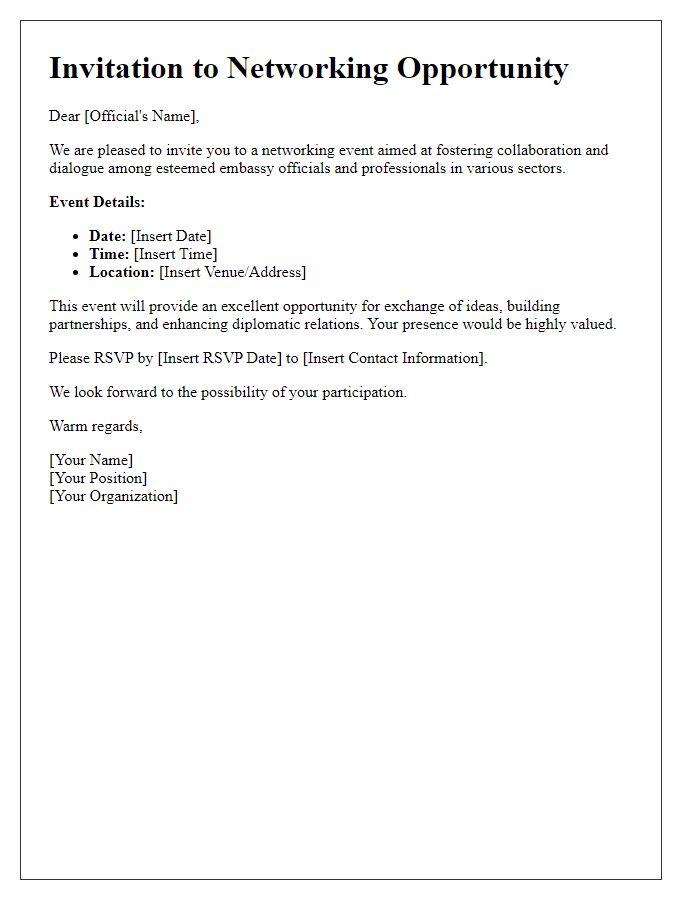

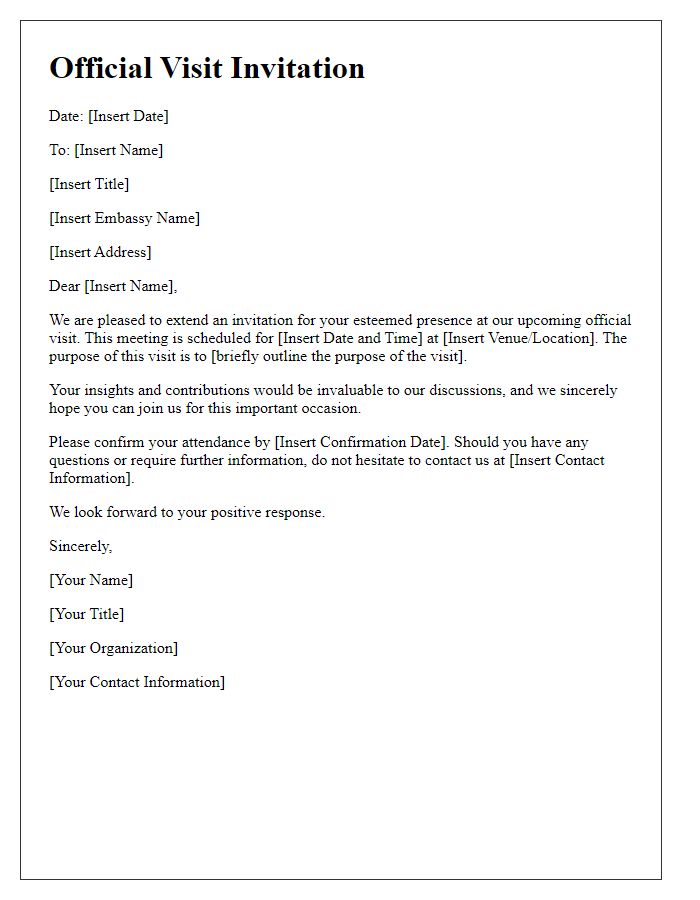
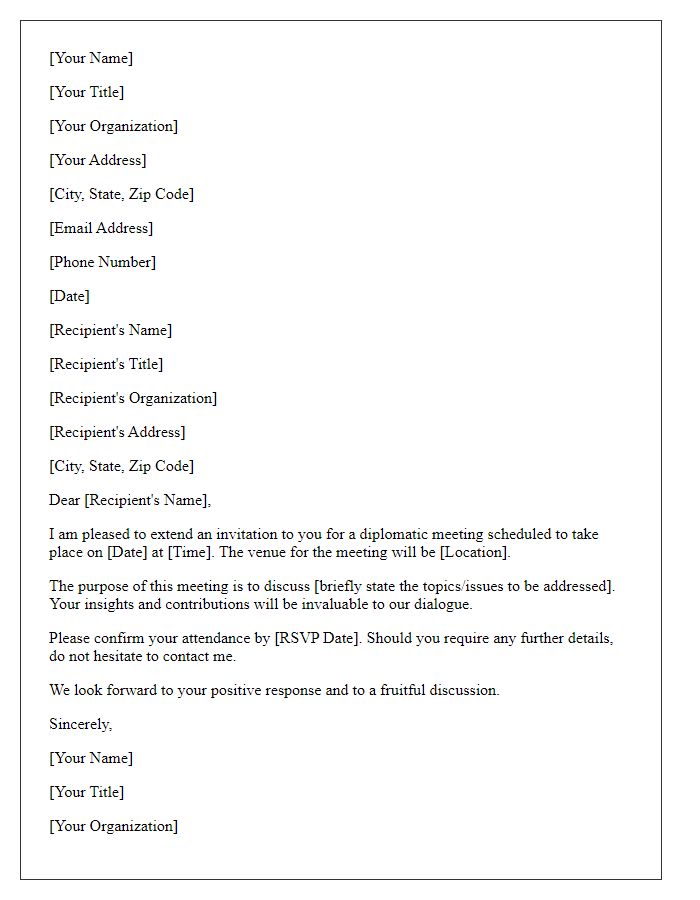
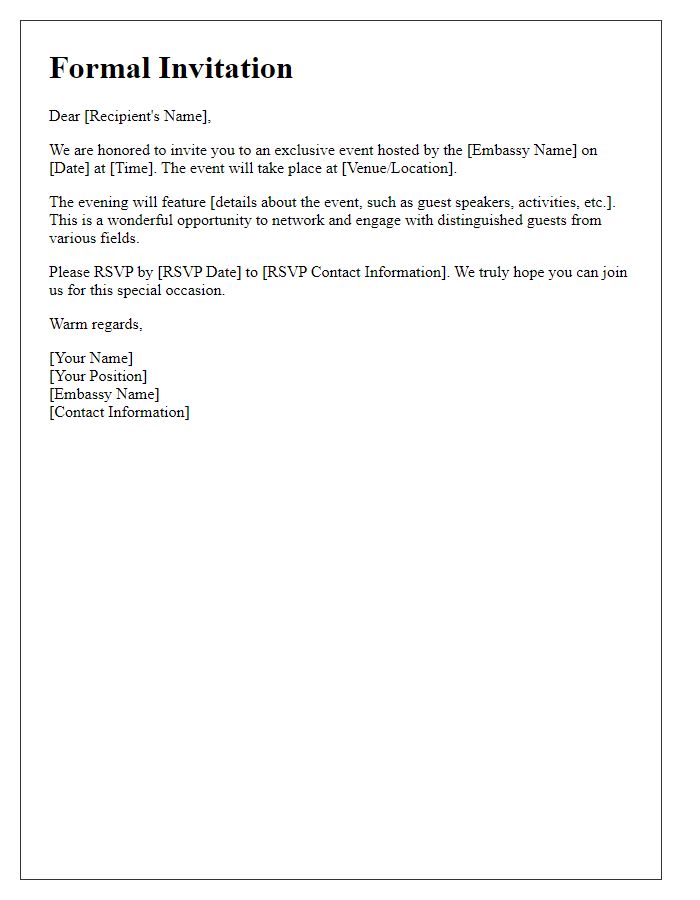
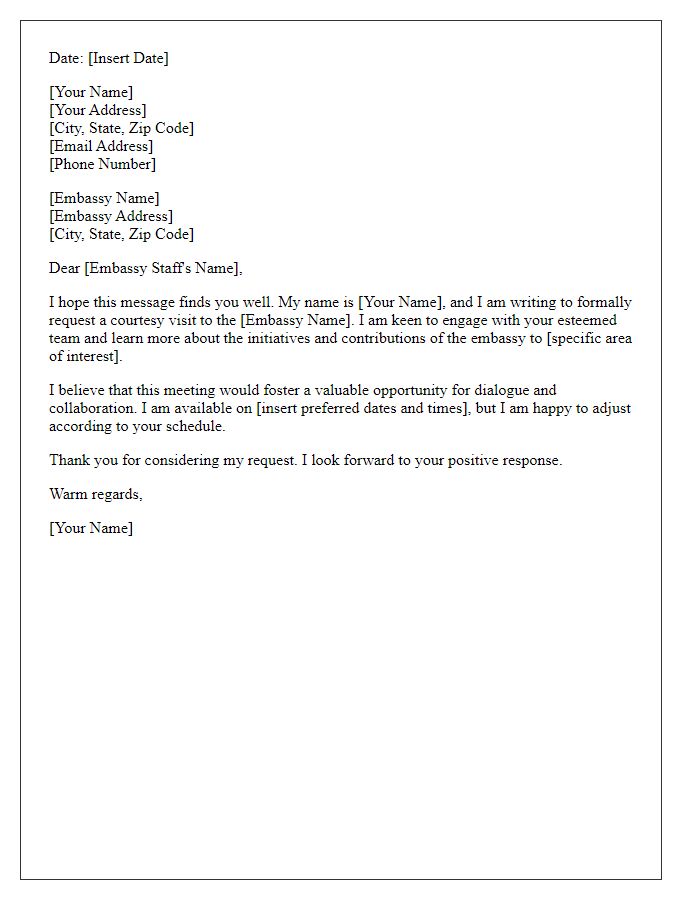
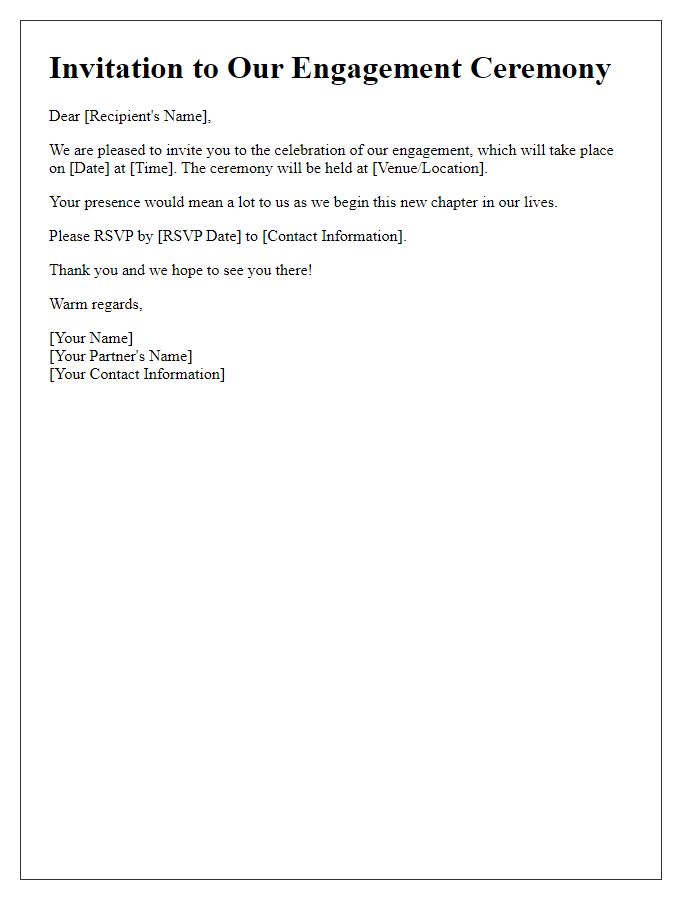
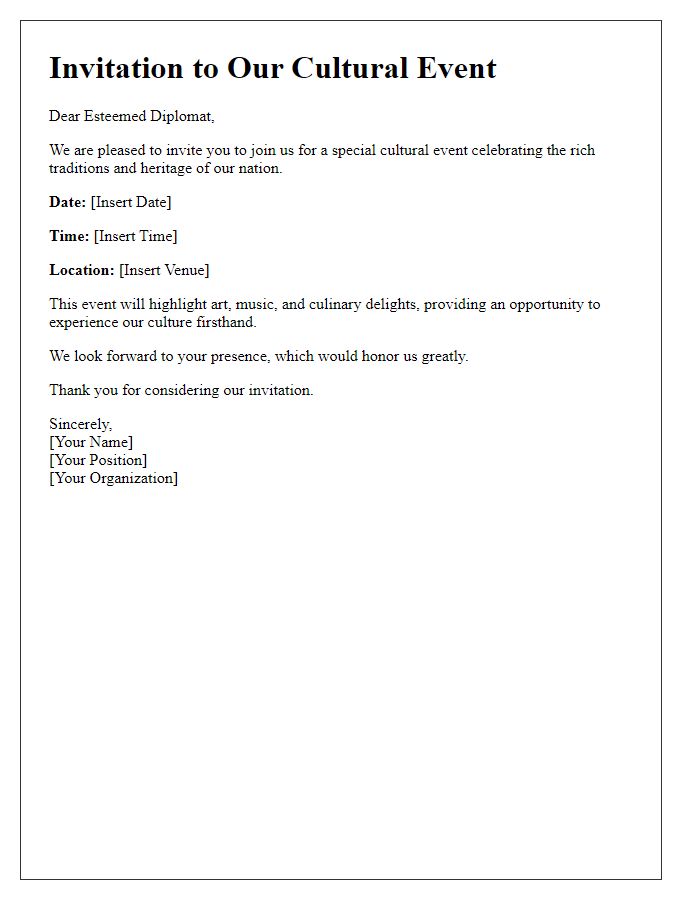

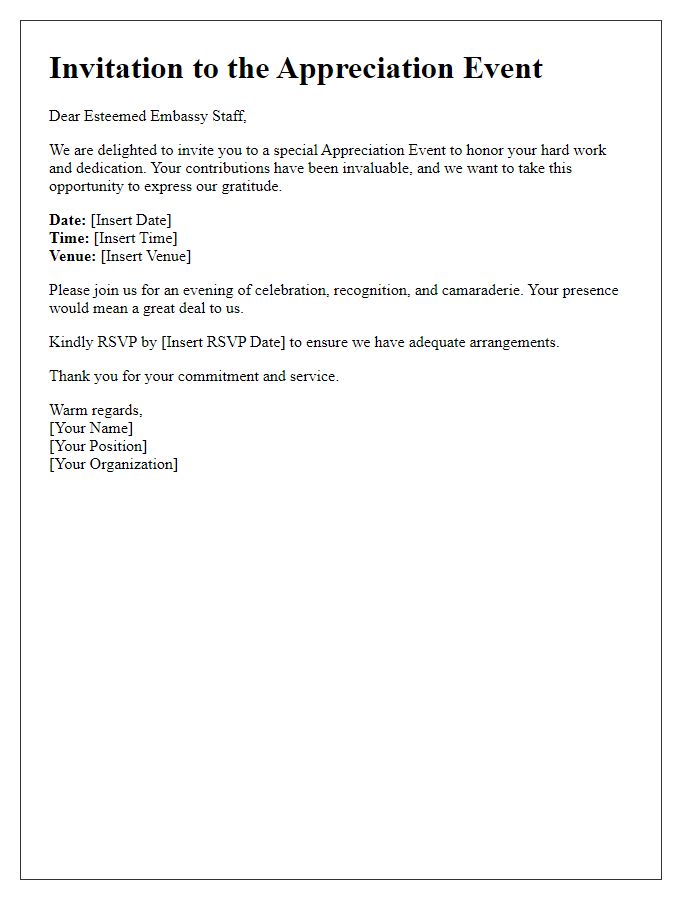
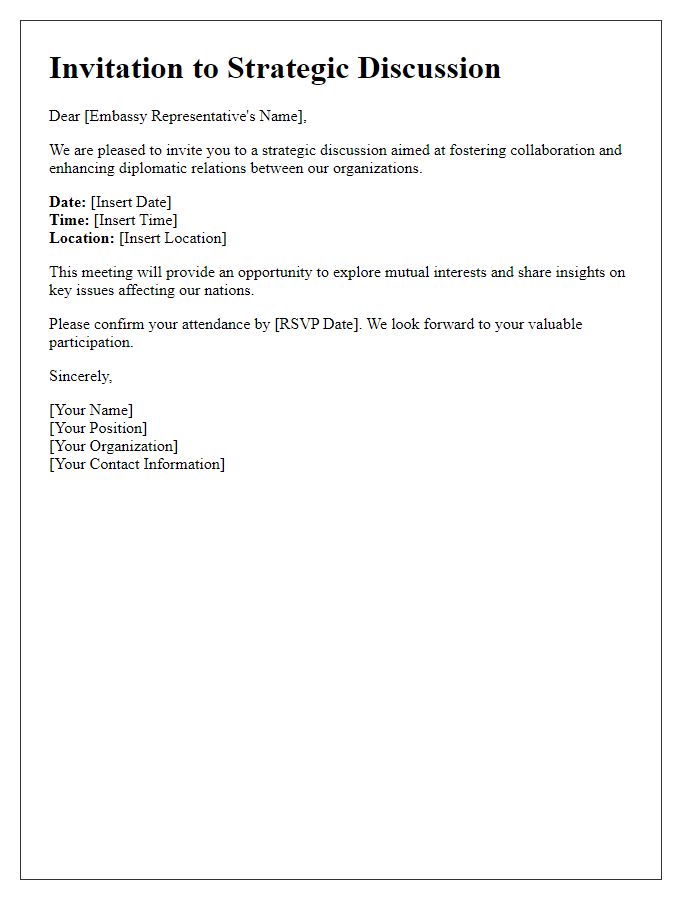

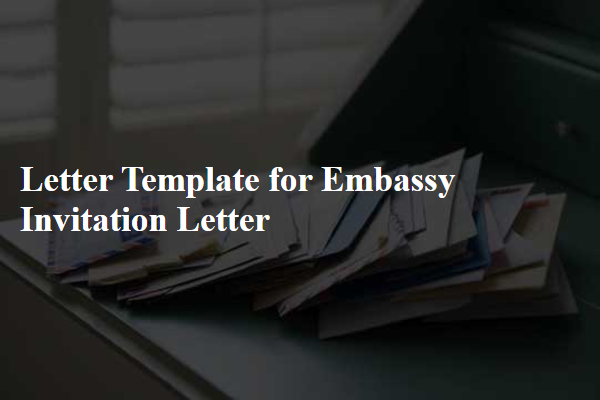
Comments